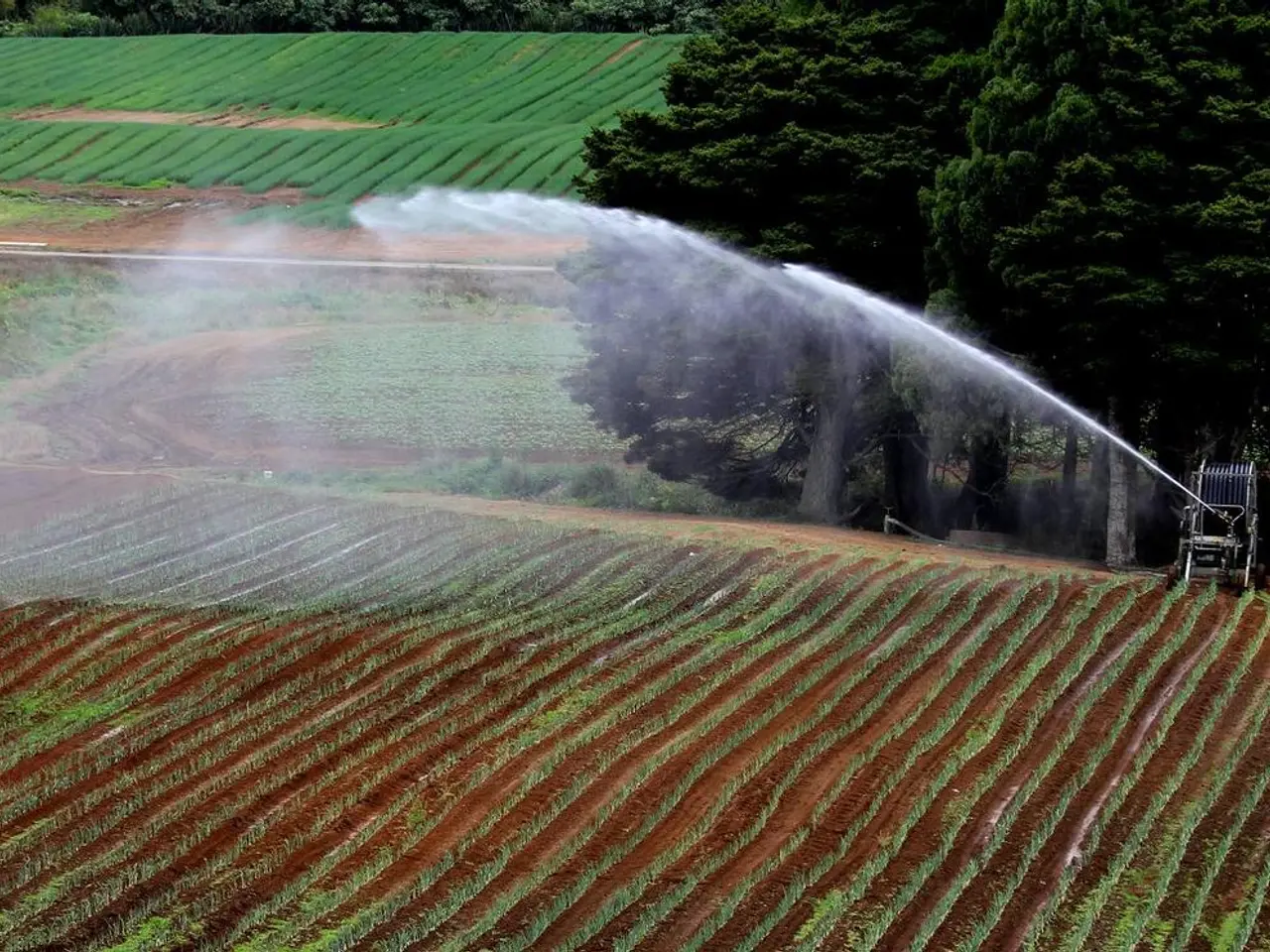Efficient Maintenance Management Systems leveraged in Agricultural Enterprises
In the rapidly evolving world of agribusiness, Computerized Maintenance Management Systems (CMMS) are making a significant impact by streamlining maintenance processes, reducing downtime, and lowering repair costs.
These advanced systems provide a centralized platform for managing maintenance tasks, enabling preventive and predictive maintenance scheduling. Mechanics and field technicians receive timely alerts via desktop or mobile devices, complete with task details, instructions, and a service checklist.
For custom farming and equipment rental businesses, CMMS offers full visibility into machine condition, upcoming service needs, and repair history across clients and locations. This transparency is invaluable, providing a wealth of data for warranty claims, resale value, and internal reporting.
Leasing and equipment finance companies also benefit from CMMS, as it helps track usage and service compliance. This reduces risk and improves the resale potential of leased equipment.
Full service transparency is achieved through digital logging of every inspection, repair, and oil change. This data-driven approach not only reduces downtime but also empowers smarter fleet decisions. By analysing CMMS data, businesses can identify which machines are costing more to maintain, which parts fail most often, and where bottlenecks happen.
Notable examples of CMMS in action include John Deere's Operations Center platform, which enables farmers to monitor equipment health, receive maintenance alerts, and sync tasks with local dealers. Trimble's farm management platform also integrates maintenance tracking, allowing users to log repairs, monitor usage trends, and schedule recurring service tasks.
Every machine has its own digital logbook, containing a history of maintenance, repairs, and service tasks. Many CMMS platforms connect to parts inventory, automatically reserving the right parts for service tasks.
CMMS platforms simplify the creation and assignment of maintenance tasks, track progress and costs, ensure adherence to maintenance procedures, and facilitate data-driven decision-making through automatic reports and dashboards.
In the mining sector, integrating IoT devices and advanced analytics with maintenance management has further enhanced predictive capabilities, reducing downtime by up to 30% and cutting costs significantly compared to traditional methods. Agribusinesses adopting similar technologies within CMMS could gain comparable benefits through better monitoring, root cause analysis, and spare parts optimization.
In summary, CMMS directly improves agribusiness maintenance by systematizing and automating maintenance activities, providing data-driven insights, and enabling proactive asset management to keep equipment running efficiently and cost-effectively.
Digital maintenance tools like CMMS give teams visibility, structure, and alerts to stay ahead of problems, turning a chaotic maintenance process into a smooth, proactive system. For farmers and service teams, CMMS are practical tools that ensure machines continue to run efficiently, reducing unexpected repairs and minimizing downtime.
- In the aerospace industry, similar data-driven maintenance systems like CMMS could potentialy streamline processes, reduce downtime, and lower repair costs, as they have done in agribusiness.
- For businesses involved in personal-finance or finance, the cost savings from implementing a CMMS could be utilized more effectively in data-and-cloud-computing, technology, or other necessary areas, since the system optimizes resources spent on maintenance.
- The data generated by CMMS is not only beneficial for the manufacturing and agribusiness sectors, but also for the broader industry, as it offers insights for budgeting and internal reporting, potentially leading to smarter financial decisions.
- As CMMS platforms become more prevalent in various industries, from farming to finance, they are transforming the way business regard maintenance and asset management, promoting a proactive approach and fostering the efficiency and cost-effectiveness of operations.








